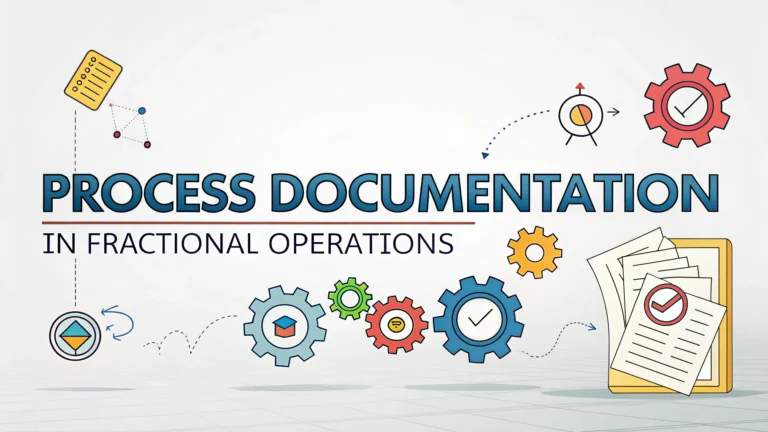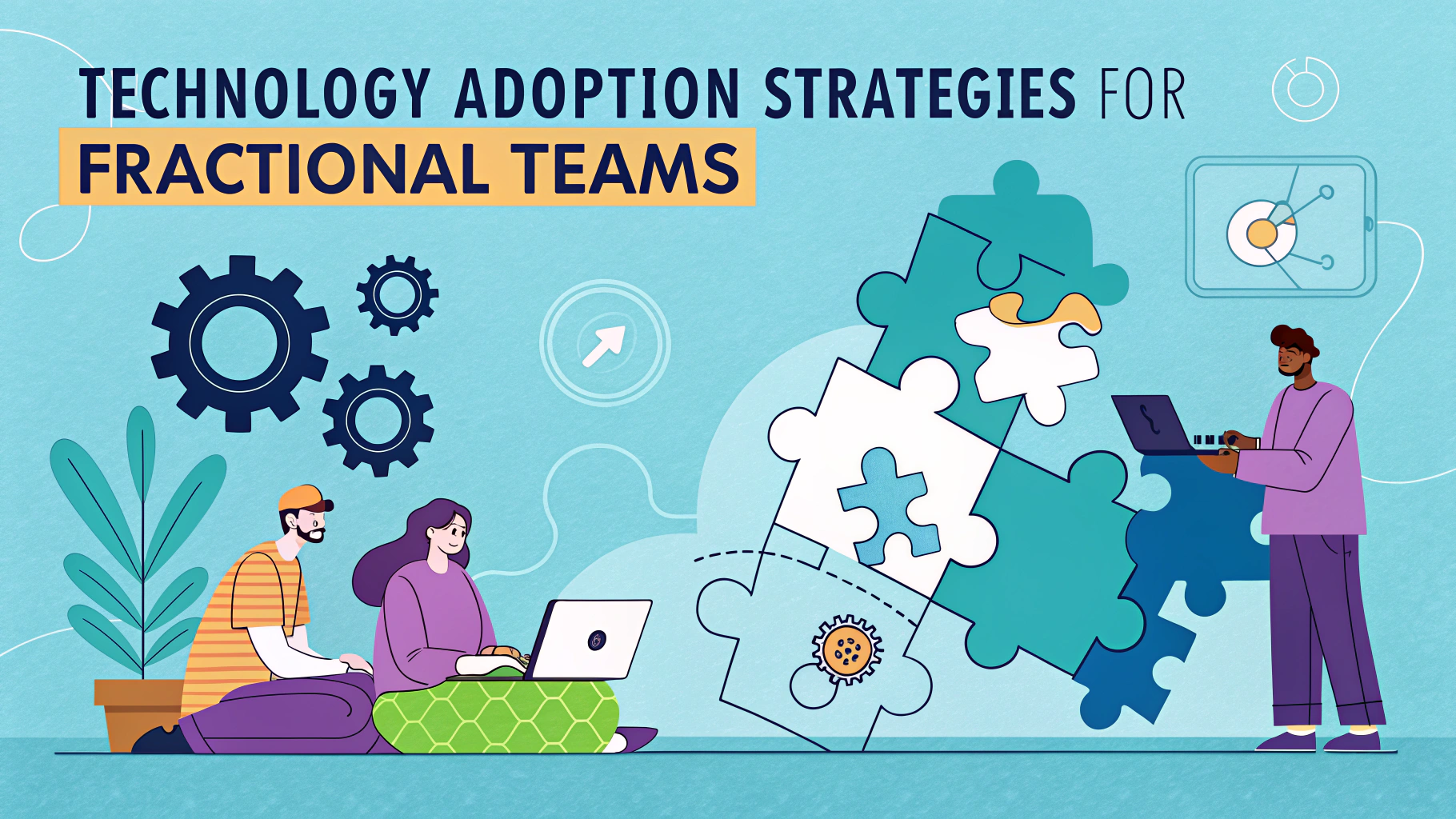Process documentation helps fractional COOs streamline operations, maintain consistency, and ensure smooth handoffs between team members.
As a fractional leader managing multiple organizations, having clear documentation systems becomes even more essential for maintaining oversight and driving results.
This guide explores proven approaches for creating and maintaining effective process documentation as a fractional COO.
Key Components of Process Documentation
- Standard operating procedures (SOPs)
- Workflow diagrams and charts
- Role and responsibility matrices
- System access and login details
- Training materials and guides
- Emergency procedures and contingency plans
Documentation Tools and Platforms
Select documentation tools that enable easy access, updating, and sharing across organizations:
- Notion – Flexible workspace for SOPs and knowledge bases
- Process Street – Checklist and workflow management
- Lucidchart – Visual process mapping and diagrams
- Google Workspace – Collaborative document creation and storage
- Confluence – Enterprise-grade documentation platform
Documentation Best Practices
- Use clear, simple language that anyone can understand
- Include step-by-step instructions with screenshots
- Regularly review and update documentation
- Implement version control
- Create templates for consistency
- Add search functionality
Documentation Organization Framework
| Category | Content Types |
|---|---|
| Core Processes | Daily operations, key workflows, standard procedures |
| Systems | Software guides, access protocols, integration details |
| Team | Roles, responsibilities, contact information |
| Emergency | Backup procedures, crisis response plans |
Implementation Steps
- Audit existing processes and documentation
- Identify documentation gaps
- Create documentation templates
- Train team members on documentation practices
- Set up regular review cycles
- Monitor adoption and gather feedback
Security and Access Control
Implement these security measures for process documentation:
- Role-based access control
- Two-factor authentication
- Regular backup procedures
- Audit trails for changes
- Non-disclosure agreements
Moving Forward with Documentation Success
Schedule quarterly documentation reviews to ensure information stays current and relevant.
Consider hiring a dedicated documentation specialist for larger operations.
Use analytics to track document usage and identify areas needing improvement.
For more guidance on process documentation, contact professional COO organizations like the COO Alliance or Chief Operating Officer Network.
Measuring Documentation Effectiveness
- Track time saved through documented processes
- Monitor error reduction rates
- Measure onboarding efficiency
- Analyze documentation usage metrics
- Collect team feedback surveys
Training and Adoption Strategies
Initial Training
- Conduct documentation workshops
- Create quick-start guides
- Provide video tutorials
- Assign documentation mentors
Ongoing Support
- Regular refresher sessions
- Office hours for questions
- Documentation champions program
- Monthly best practices sharing
Scaling Documentation Systems
- Implement automated documentation tools
- Create documentation hierarchies
- Develop cross-reference systems
- Establish documentation governance
- Build knowledge management frameworks
Empowering Operational Excellence
Strong process documentation forms the foundation of scalable operations across multiple organizations. As a fractional COO, prioritize documentation systems that are accessible, maintainable, and secure. Regular reviews, team training, and continuous improvement ensure documentation remains a valuable asset for organizational success.
Remember that effective documentation is an ongoing journey rather than a destination. Stay committed to evolving your documentation practices as organizations grow and technology advances.
Take action today by implementing these strategies to create robust documentation systems that drive operational efficiency and team alignment.
FAQs
- What is process documentation in fractional COO operations?
Process documentation in fractional COO operations involves systematically recording workflows, procedures, and operational protocols that a part-time Chief Operating Officer implements and oversees within an organization. - Why is process documentation crucial for fractional COO engagements?
Process documentation ensures continuity of operations, maintains consistency across different stakeholders, facilitates knowledge transfer, and enables smooth transitions between fractional COO periods of engagement. - What are the essential components of process documentation for fractional COOs?
Essential components include standard operating procedures (SOPs), workflow diagrams, role responsibilities, decision matrices, key performance indicators (KPIs), reporting templates, and process improvement protocols. - How should a fractional COO structure process documentation?
Documentation should be hierarchical, starting with high-level process maps, followed by detailed procedures, supporting documents, templates, and reference materials, all organized in easily accessible digital formats. - What tools are commonly used for process documentation in fractional COO work?
Common tools include digital documentation platforms like Notion, Process Street, Lucidchart for process mapping, Google Workspace for collaborative documents, and project management tools like Asana or Monday.com. - How often should process documentation be updated in fractional COO operations?
Documentation should be reviewed and updated quarterly, or whenever significant operational changes occur, ensuring all procedures remain current and effective. - What are the best practices for maintaining process documentation as a fractional COO?
Best practices include version control, regular audits, stakeholder feedback integration, cloud-based storage, proper access management, and maintaining a change log for all updates. - How does process documentation support knowledge transfer between fractional COO engagements?
Well-maintained process documentation serves as a comprehensive handover tool, enabling smooth transitions between fractional COOs and ensuring operational continuity for the client organization. - What role does automation play in process documentation for fractional COOs?
Automation helps streamline documentation creation, updates, and distribution, while also enabling real-time collaboration and ensuring consistency across all documented processes. - How should confidential information be handled in process documentation?
Confidential information should be clearly marked, stored securely with appropriate access controls, and managed according to data protection regulations and client confidentiality agreements.







